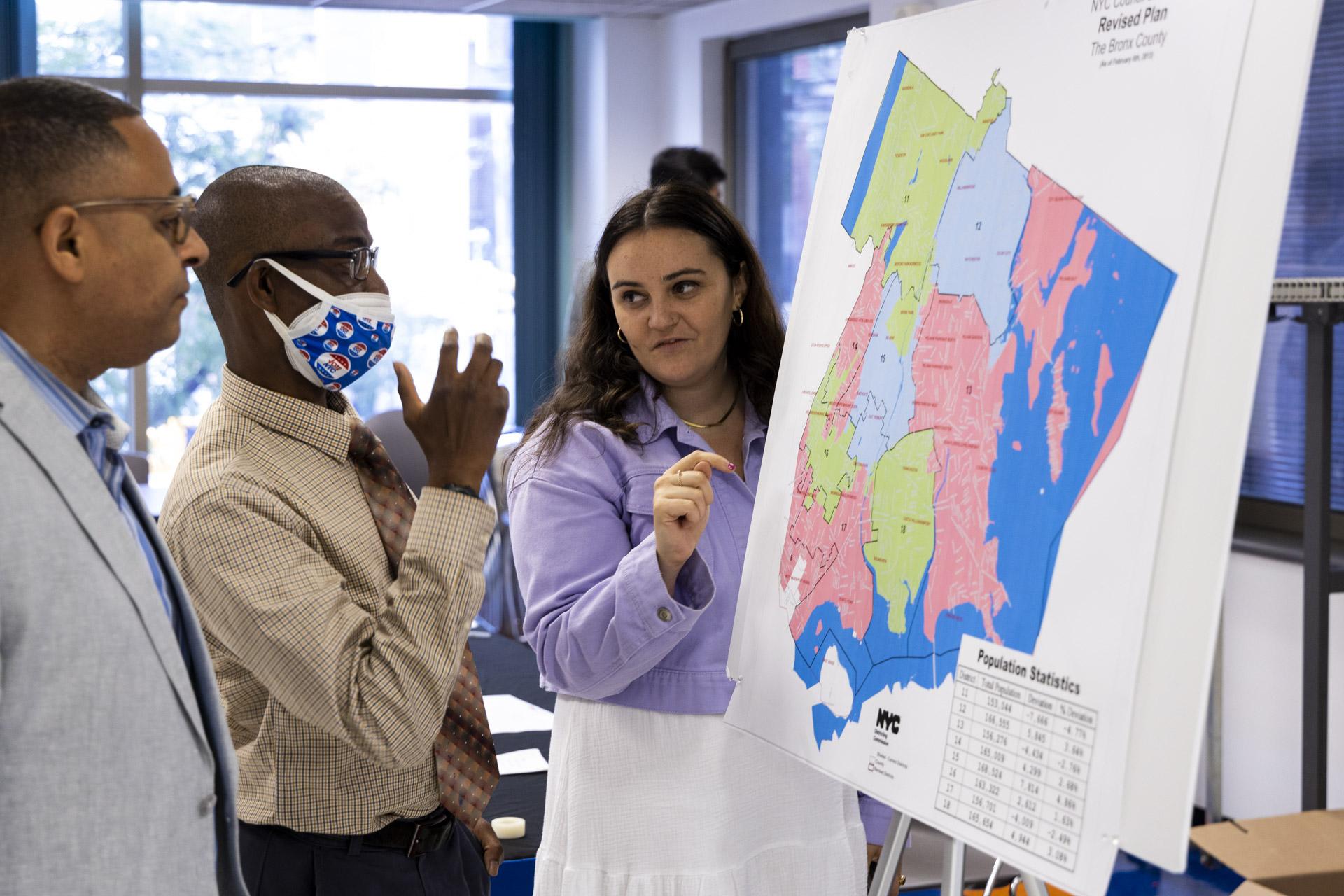Few Bronxites showed up for a hearing at Hostos Community College, where the New York Districting Commission took comments from the public. The commission is redrawing the city’s 51 Council districts into new lines that will be in effect for the next 10 years.
As New Yorkers brace for new maps that will reshape who represents them in the City Council for the next decade, some Bronx community leaders are alarmed at how few community members are participating in the process.
Although the public was invited to attend a public hearing at Hostos Community College on July 6 to comment on new draft maps, almost no Bronxites were there to make the borough’s presence felt.
The hearing was among the last to be organized by the New York City Districting Commission before unveiling new maps for the city’s 51 council districts, based on input from the public.
The first draft maps are slated to be released this Friday, July 15. The public will then have a chance to review the proposed new district lines in the coming months. The process is expected to be finalized by next February, and the newly shaped districts would be in effect in time for the Nov. 2023 Council elections.
Michel Brady, executive director of the Third Avenue Business Improvement District, said he was underwhelmed with the Bronx’s meager representation at the June 6 forum, and “a little disappointed that we didn’t have more Bronx Council members here or members of their staff.”
By failing to make their voices heard, Bronxites are hurting themselves in the long run, said Brady.
“The lines will be redrawn, we’ll be unhappy and they’ll say ‘oh well, the Bronx got what it deserved because no one showed up,’ and part of that is true,” he said.
But, Brady added, the fault lies in part with the city for holding the event on a weekday afternoon when so many residents are at work, and for lackluster community outreach in neighborhoods like Mott Haven and Hunts Point, where internet access lags behind the rest of the city.
Dennis Walcott, Chair of the Districting Commission, said participation has been robust in other parts of the city, where residents joined meetings virtually and submitted written testimony via email.
“People are representing their district, and that’s what we encourage” Walcott said.
Lisa Sorin, president of the New Bronx Chamber of Commerce, said many people seem not to understand the redistricting process, and seem unaware that it is underway.
“We realized that we need to put more effort or have a dialogue with the communities” so the Commission understands the community’s needs and can “accommodate them to the best of their abilities according to the laws.”
By missing out on the public process, Bronxites are missing a golden opportunity to demand the resources they are lacking, she said.
“The squeaky wheel gets the oil,” said Sorin.
Why are district maps being redrawn
According to the city charter, New York City is required to redraw district maps every 10 years in conjunction with the decennial U.S. Census, reflecting population changes. The city’s population grew by more than seven percent, from 8.2 million people in 2010 to 8.8 million people in 2020.
“The whole principle of one man one vote is embodied in our census that is taken every 10 years to make sure that our votes matter in a meaningful way for all citizens,” said Commissioner Judge Marilyn D. Go at the July 6 hearing at Hostos.
State law says that the city’s population across all 51 council districts must not vary more than five percent from each other. For the new maps, that means that each new district must have an average of 173,000 residents. The smallest district can have a population as low as 166,000. The biggest can have up to 178,000.
As a result, Go explained, some districts with more than the maximum must be pared back.
Why public participation matters?
By participating in the reviews and finalization of the new district maps, residents let their representatives know that they’re watching, as Council members consider how to allocate money from the city’s $101 billion budget this fiscal year.
Beyond the budget, the Council votes on key issues such as housing, taxes, restoration of parks and sanitation cuts, investments in community safety programs, and other responsibilities affecting neighborhoods.
Who’s on the Districting Commission?
The Districting Commission is made up of 15 members reflecting the demographic makeup of the city. According to the NYC Districting Commission website, “Five of the Commissioners were appointed by the City Council’s Majority Caucus, three were appointed by the City Council’s Minority Caucus, and Mayor Adams appointed the remaining seven members.”
The Commission was charged with reviewing current relevant laws, regulations, and 2020 Census data. They were also responsible for organizing public hearings across the five boroughs to hear public testimony regarding the initial draft of the maps.
What does the redistricting process look like?
There are several rounds of public hearings prior to the initial drafting of the maps. The first round of public hearings have concluded. The first draft of the new maps will be unveiled on July 15.
According to the process outline published by the NY Districting Commission, there will be two additional opportunities in the future where the public will be able to comment on how the new maps have been redrawn.
The City Council will have to review the plans and after additional reviews they will be sent to the City Clerks for implementation.

